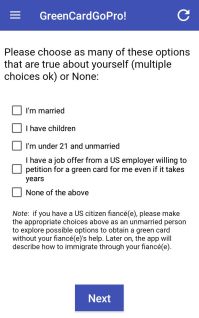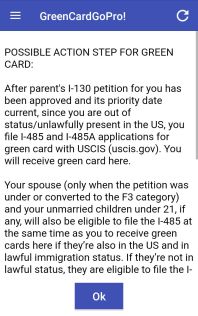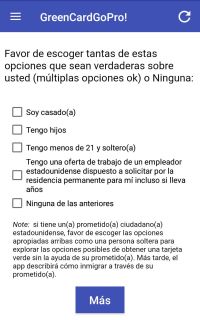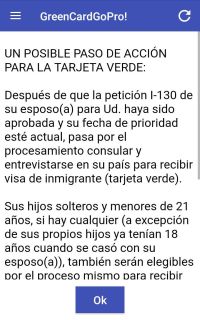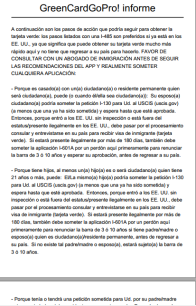(Click on Top Banner to Return to the Blog Home Page from Any Blog Article)
Note: The Law Offices of Larry L. Doan in Los Angeles, CA, provides the following blog article and other information on this site, including our responses to comments, for the purpose of legal information only; it is NOT legal advice nor does it create an attorney-client relationship.
We thought it would be fascinating and instructive to analyze and compile a list of why people were denied their visa applications in trying to immigrate to the U.S. An immigrant with one of these reasons potentially lurking in the background could try to gauge their chances of success to some extent using this list.
Only 2017 statistics are included in the list. Also, it only includes people who tried to apply for immigrant visas last year, that is, to immigrate permanently to the U.S. In legalese, these reasons for denial are known as “grounds of inadmissibility” or “inadmissible grounds.” These grounds come into play at the last step of the immigration process: at the consulate interview in the immigrant’s home country before the immigrant receives the immigrant visa for permanent residence. This is after all the years of waiting for the visa priority date to be current, after all the facts of the relationship have been proved to be true between the petitioner and beneficiary, after all the forms appear to have been correct….but then these grounds appear suddenly like thieves in the night to derail the immigrant visa application.
Note: Our new self-consultation apps on how to immigrate to the US, available as described here, are for applicants who do not have these grounds on their records, except for Nos. 6 and 4 below (Unlawfully present in US 365 days or more) which fortunately, as can be seen below is not too difficult to overcome with the right type of extreme hardship evidence.
For each inadmissible ground, along with our comments, the list includes the total number of people denied last year, as well as the percentage who were denied. In other words, out of the total number of applicants faced with a certain ground of inadmissibility, such as for example, criminal convictions, some percentage of applicants was ultimately approved for their visas because they managed to receive some type of waiver.
The list is ranked by the total number of applicants denied, from the smallest to the largest. So, let’s begin…
No. 10 – Controlled substance violators
Applicants denied: 644 Denial rate: 94%
The extremely high rate of denial is quite fitting here. Those applicants who violated or were convicted of violating controlled substance laws (no matter in what country, by the way) have an extremely difficult time overcoming this ground, as seen in the 6% figure of those who managed to do so.
No. 9 – Public charge
Applicants denied: 1,221 Denial rate: 38%
A public charge is someone who cannot support themselves in the US but must resort to the government to support them. Such a person cannot immigrate here. As can be seen, however, this reason for denial is relatively easy to overcome with 62% of applicants able to correct the problem when they were told by the consulate that there was a problem. In reality, the immigrant’s petitioner had to sign the Affidavit of Support form ahead of time to agree they would pledge their income and assets to support the immigrant. Even if the income is not enough, a joint sponsor’s income can be used to help out. Thus, it’s quite easy to overcome the ground of being a public charge and for the immigrant visa to be approved as a result.
No. 8 – Smugglers
Applicants denied: 1,292 Denial rate: 51%
Just to be clear, this refers to alien smuggling, not contraband. And yes, there is a waiver available if the alien being smuggled was someone in the immigrant’s immediate family. The term “smuggling” makes it seem as though the immigrant committed a very serious act, but actually, it includes acts such as “encouraged, induced, assisted, abetted, or aided any other alien to enter or to try to enter the United States in violation of law.” So, it’s not only hiding another person in the trunk of a car that can make you guilty of alien smuggling! Regardless, the 51% denial rate shows that this ground is not so difficult to overcome as in previous years when there was up to 90% denial rate.
No. 7 – Crime involving moral turpitude (CIMT)
Applicants denied: 1,363 Denial rate: 80%
The bad CIMT. In immigration work, lawyers hate to hear this acronym mentioned because it means the client’s case could be a very hard case! A crime, such as DUI (driving under the influence) will not involve moral turpitude because it does not involve “baseness” or a “bad heart,” which is a rough definition of “moral turpitude.” But DUI with death or injury involved may involve moral turpitude, depending on the local DUI law involved and if there was at least recklessness on the part of the driver in causing the death or injury. Of course, it goes without saying that more serious crimes such as fraud, theft, rape, murder, and so forth are CIMTs. A conviction for a CIMT in an applicant’s past will make them inadmissible to the U.S. although a waiver is possible. However, the 80% denial rate shows that the waiver will be quite difficult to get.
No. 6 – Unlawfully present 365 days or more (provisional waiver)
Applicants denied: 1,956 Denial rate: 5%
This category is very common because, as we discussed it in detail in our other article, “I’m Illegal, I Can Still Get a Green Card by Marrying My U.S. Citizen Boyfriend or Girlfriend?”, many immigrants have previously accumulated unlawful or illegal presence in the US of 365 days or more, such that if they leave to try to apply for their permanent visa at the US consulate in their country, they are confronted with the 10-year bar. As was shown in that article, this bar has available an extreme hardship waiver that is applied for in the US even before the applicant leaves for the interview, known as the “provisional unlawful presence waiver” or just “provisional waiver.”
The 5% rate of denial is misleading; it does not mean this waiver is easy to get (anything involving the showing of “extreme hardship” to a US relative is not easy to begin with). It only means that even after the provisional waiver had been approved for the applicant before leaving the US, he or she was confronted with something seriously deficient about the waiver: for example, maybe the consulate discovered there was fraud in applying for the waiver, or some other problem, etc. All this statistic really shows is that for 95% of applicants who had the provisional waiver approved before leaving the US for consulate interview (if it’s not approved, they most likely wouldn’t leave), they will eventually be approved for their visa.
No. 5 – Unlawfully present after previous immigration violations
Applicants denied: 2,648 Denial rate: 83%
This category is an extremely harsh category to be caught under. It consists of immigrants who had been unlawfully present in previous times in the U.S. for a total period of more than 1 year, or who were ordered removed or deported, but later they entered or tried to enter the U.S. illegally. At their consulate visa interview, when this negative immigration history is discovered, such a person cannot be admitted to the U.S. It’s a lifetime bar! However, the person could wait 10 years outside the U.S. then apply to immigration authorities for permission to reapply for admission to the U.S.
No. 4 – Unlawfully present 365 days or more (non-provisional waiver)
Applicants denied: 3,022 Denial rate: 39%
This category is the same 10-year bar as in No. 6 above, except that for these applicants, for whatever reason, they did not obtain an approved provisional waiver before leaving the US for their consulate interview. Instead, at the interview they are confronted with the 10-year bar. And, as was shown in the same article, this bar does have an extreme hardship waiver available to excuse it when the applicant is applying from outside the US, the non-provisional waiver type. This waiver had a 39% denial rate last year, or in other words, nearly 6 out of 10 applicants got the waiver approved.
However, this doesn’t necessarily mean this waiver is easy to get. Obviously, the statistics used to construct this list does not, and indeed, cannot tell us how many people who knew ahead of time they would be denied and did not bother to apply. For example, someone with a weak case might have obtained legal advice ahead of time from their immigration lawyer that applying for a visa would be a waste of time even if there is a waiver available in the law. Thus, it may be that for certain waivers such as this one, there were more applicants with stronger cases to begin with anyway, thus biasing the rate of success toward approval. To obtain approval of this waiver, the immigrant has to leave behind their family in the U.S. and travel back to their home country and apply at the U.S. consulate. If the waiver is denied, they are stuck in their country unable to return to their family. Thus, looking at the statistics we believe that it’s likely only people who felt more confidently ahead of time that they have a strong hardship case would take this risk.
No. 3 – Misrepresentation
Applicants denied: 4,360 Denial rate: 74%
This is the “When you lie, you fry” category. These were immigrants who had their visas denied due to being caught committing fraud or misrepresenting (lying) some fact in order to obtain the visa or even any previous visa or admission document. The relatively high denial rate shows that U.S. immigration authorities do not have a high tolerance for immigrants not being truthful on their applications. Still, 26% of them last year ended up overcoming this due to a waiver being available. The waiver is to show extreme hardship to a spouse, child or parent who is a U.S. citizen or legal permanent resident and thus, is quite similar to the waiver used for the very common 10-year bar, which is the next category.
No. 2 – Labor certification
Applicants denied: 8,363 Denial rate: 96%
A less well-known way of immigrating to the U.S. is through an employer petition. A U.S. employer can petition for an immigrant worker to take a permanent job position in the U.S. In order to qualify, however, the employer must file a labor certification application with the U.S. Department of Labor to certify that there are no willing, able, and qualified U.S. workers for the job position. Only if this labor certification is certified will the immigrant worker be approved a visa to immigrate. However, at the consulate interview, there are many applicants whom the consulate found to have intended to immigrate to the US to work, without having had a labor certification filed and certified for them. Those cases must be denied. Or, even if a labor certification has been obtained, the visa may still be denied, such as when the consulate officer believes the worker does not truly intend to work for the employer, or fraud in obtaining the labor certification, etc. This ground of denial is almost impossible to overcome as seen in the almost 100% rate of denial.
Finally, we come to the TOP REASON FOR VISA DENIAL, which is…:
No.1 – Application does not comply with provisions of law or regulations!
Applicants denied: 85,185 Denial rate: 33%
Amazingly, for something that is #1, it is not a fancy reason to deny a visa! The Department of State does not break out in fine details what these consisted of, but they have to do with reasons such as the applicant not being eligible for the visa being sought, filing requirements not met, lack of required evidence, missing forms, missing information, etc. Pretty mundane reasons actually. That said, this category seems to also be a catch-all category containing reasons for denial that do not fit neatly into any of the main categories laid out in the Immigration and Nationality Act (INA).
This reason for denial (legally, section 221(g) of the INA) is relatively easy to overcome. This is understandable if the denial has to do with deficient application forms or missing evidence since those can be easily fixed by the applicant. A HUGE number of applicants were told initially they were in this category last year, more than 254,000, which easily dwarfs all the other nine categories combined. The lesson here is, make sure you are eligible for the visa ahead of time and your applications and documents in tip-top shape! Hiring a good immigration lawyer is obviously a good start toward this end.
So, those are the top 10 reasons for denial in terms of number. In terms of percentage, the ranking goes like this from the most difficult to overcome to the easiest:
1. Labor certification – 96%
2. Controlled substance violators – 94%
3. Unlawfully present after previous immigration violations – 83%
4. Crime involving moral turpitude (CIMT) – 80%
5. Misrepresentation – 74%
6. Smugglers – 51%
7. Unlawfully present 365 days or more (10-year bar)(non-provisional waiver) – 39%
8. Public charge – 38%
9. Application does not comply with provisions of law or regulations – 33%
10. Unlawfully present 365 days or more (10-year bar)(provisional waiver) – 5%
We hope you will never face any of these reasons for denial in your quest to immigrate to the U.S.!
Source: US State Department, Fiscal Year 2017 Annual Report, Table XX, Immigrant and Nonimmigrant Visa Ineligibilities, available at http://travel.state.gov/content/dam/visas/Statistics/AnnualReports/FY2017AnnualReport/FY17AnnualReport-TableXX.pdf
Copyright © 2009-2018 Law Offices of Larry L. Doan – GuruImmigration
Any action you take or rely upon after reading the information on this blog is your own responsibility and the Law Offices of Larry L. Doan bears no responsibility or connection to such action. For an analysis of your detailed and specific questions related to your individual immigration situation or problem, there is no substitute for a “live” meeting with an attorney. This can only be done during a paid consultation between the Law Offices of Larry L. Doan and you. To get started with a consultation, please contact us: paidconsult@guruimmigration.com.
